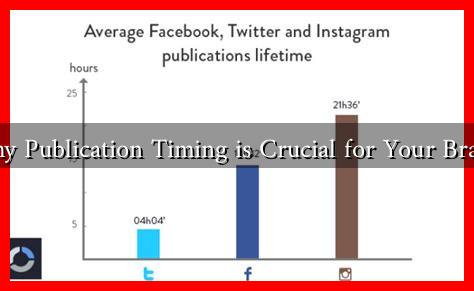-
Table of Contents
Why Publication Timing is Crucial for Your Brand
In the fast-paced world of digital marketing, the timing of your content publication can significantly impact your brand’s visibility and engagement. Whether you’re launching a new product, sharing a blog post, or announcing a partnership, understanding when to publish can make all the difference. This article explores the importance of publication timing and offers insights on how to optimize your content strategy for maximum impact.
The Importance of Timing in Content Marketing
Timing is not just about when you hit the “publish” button; it encompasses a range of factors that can influence how your audience receives and interacts with your content. Here are some reasons why timing is crucial:
- Audience Engagement: Different audiences are active at different times. Understanding when your target demographic is online can help you reach them more effectively.
- News Cycle Sensitivity: Aligning your content with current events or trends can enhance its relevance and shareability.
- SEO Benefits: Search engines favor fresh content. Publishing at the right time can improve your chances of ranking higher in search results.
- Social Media Algorithms: Platforms like Facebook and Instagram prioritize content that receives immediate engagement. Timing your posts can help you gain traction quickly.
Understanding Your Audience’s Behavior
To effectively time your publications, you need to understand your audience’s behavior. Here are some strategies to gather insights:
- Analytics Tools: Use tools like Google Analytics to track when your audience is most active on your website.
- Social Media Insights: Platforms like Facebook and Twitter provide analytics that show when your followers are online.
- Surveys and Feedback: Directly ask your audience when they prefer to receive content through surveys or polls.
For example, a study by HubSpot found that the best times to post on social media vary by platform. For instance, the optimal time to post on Facebook is between 1 PM and 3 PM on weekdays, while Twitter sees higher engagement during lunch hours.
Case Studies: Brands That Got It Right
Several brands have successfully leveraged publication timing to enhance their marketing efforts. Here are a couple of notable examples:
- Netflix: The streaming giant often releases new seasons of popular shows on Fridays, capitalizing on the weekend viewing habits of its audience. This strategic timing has led to record-breaking viewership numbers.
- Starbucks: The coffee chain frequently launches seasonal drinks at the beginning of fall, aligning with the back-to-school season when consumers are looking for comfort and routine.
These examples illustrate how understanding audience behavior and aligning publication timing with consumer habits can lead to successful marketing campaigns.
Best Practices for Timing Your Publications
To optimize your publication timing, consider the following best practices:
- Test and Analyze: Experiment with different publication times and analyze the results to find what works best for your audience.
- Stay Informed: Keep an eye on industry trends and news cycles to ensure your content remains relevant.
- Utilize Scheduling Tools: Use tools like Buffer or Hootsuite to schedule posts for optimal times, even if you’re not available to publish them manually.
Conclusion
Publication timing is a critical component of a successful content marketing strategy. By understanding your audience’s behavior, leveraging analytics, and aligning your content with current trends, you can significantly enhance your brand’s visibility and engagement. Remember, the right message at the wrong time can fall flat, while the right message at the right time can resonate deeply with your audience. As you refine your content strategy, keep timing at the forefront of your planning to maximize your brand’s impact.
For more insights on optimizing your content strategy, check out resources from HubSpot and Buffer.


